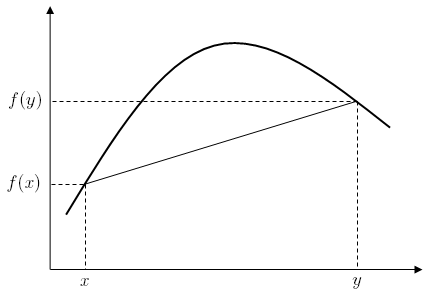Definition
A real-valued function  on an interval (or, more generally, a convex set in vector space) is said to be concave if, for any
on an interval (or, more generally, a convex set in vector space) is said to be concave if, for any  and
and  in the interval and for any
in the interval and for any  , [1]
, [1]

A function is called strictly concave if

for any  and
and  .
.
For a function  , this second definition merely states that for every
, this second definition merely states that for every  strictly between
strictly between  and
and  , the point
, the point  on the graph of
on the graph of  is above the straight line joining the points
is above the straight line joining the points  and
and  .
.

A function  is quasiconcave if the upper contour sets of the function
is quasiconcave if the upper contour sets of the function  are convex sets. [2]
are convex sets. [2]
This page is based on this
Wikipedia article Text is available under the
CC BY-SA 4.0 license; additional terms may apply.
Images, videos and audio are available under their respective licenses.
































